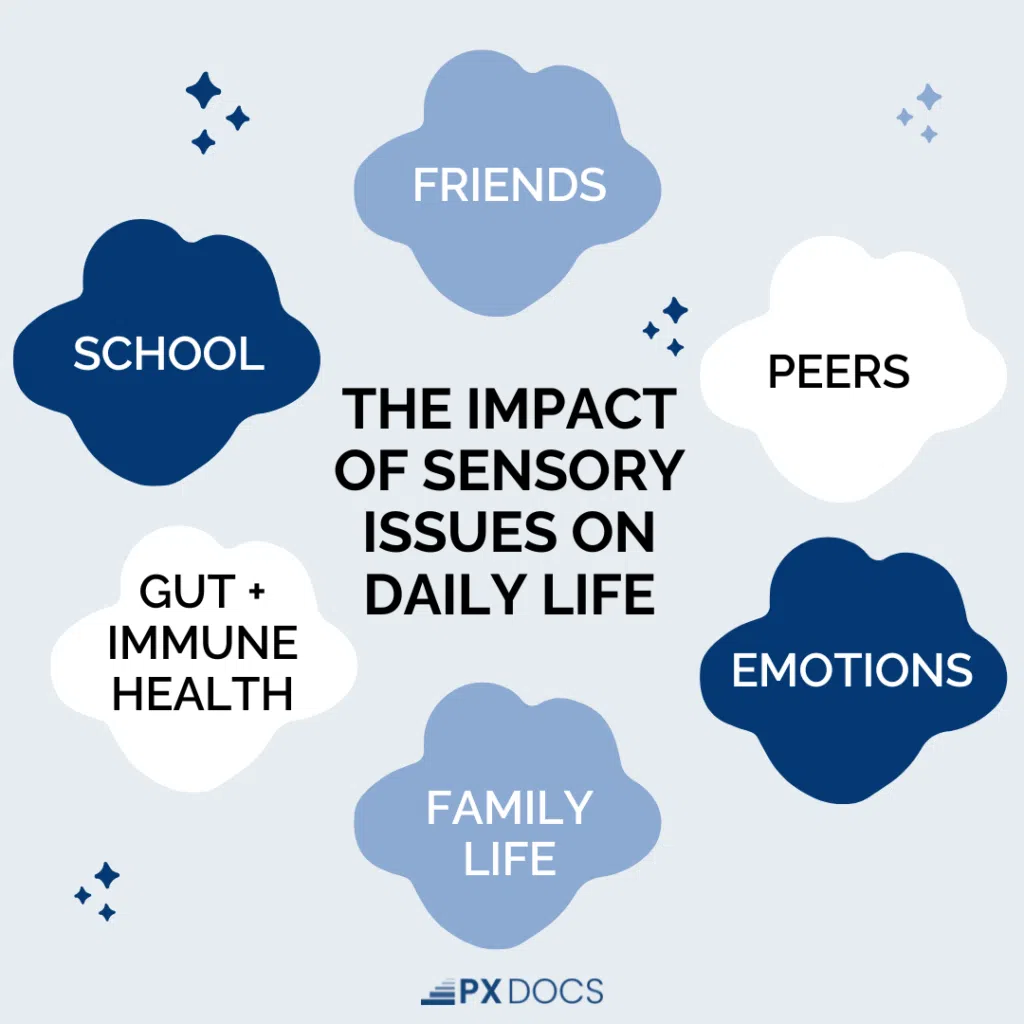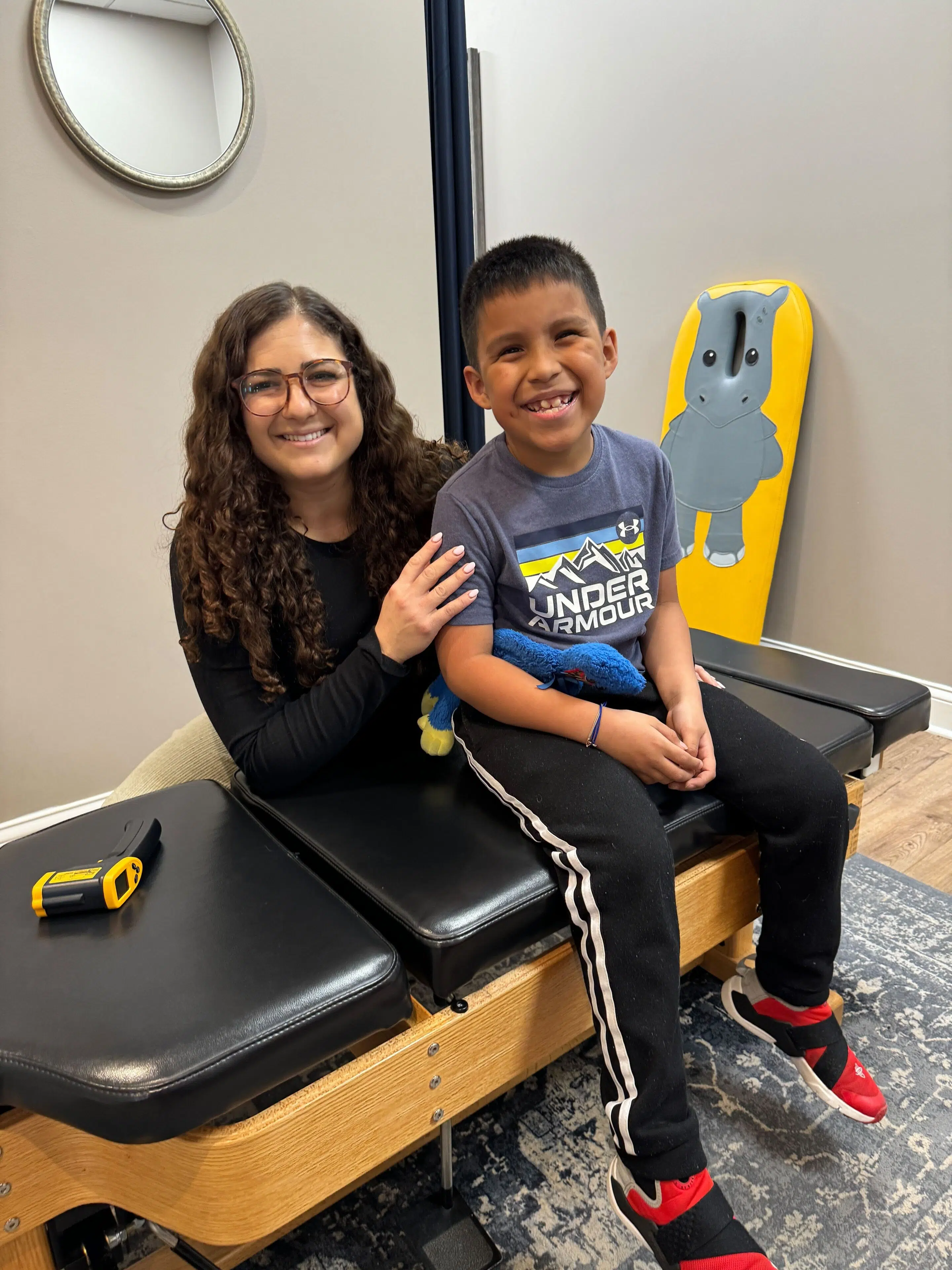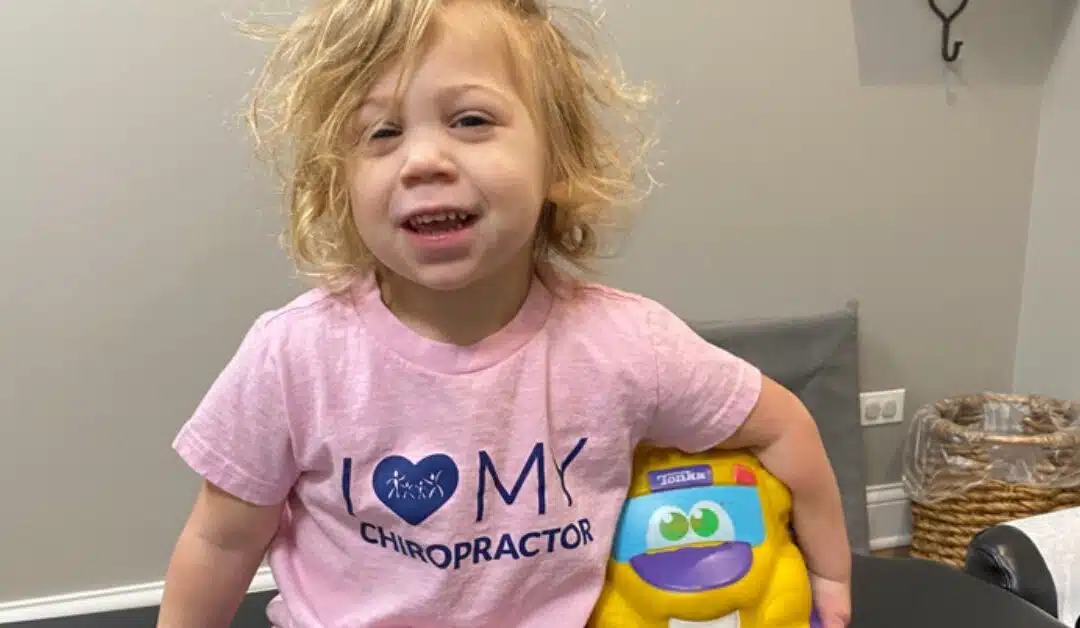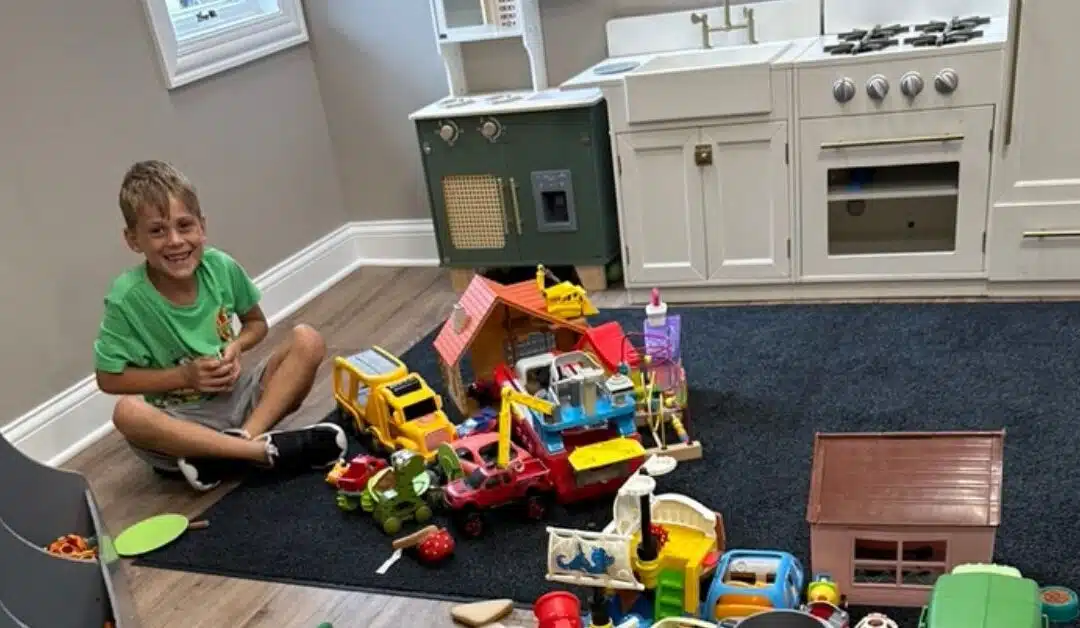Today, 1 in 6 kids experience sensory issues, and 5% experience it daily. This includes sensitivity to their surroundings, from loud noises to scratchy clothing tags, which can often cause distress and overwhelm. These everyday sensations can be difficult to tune out and may lead to severe emotional outbursts or a complete shutdown.
Suppose you find your child’s reactions to sensory input confusing or exhausting, and every single day becomes an exhausting struggle for both your child and the entire family. That was the case for Audrey’s family, as her Sensory Processing Disorder (SPD) challenges took over and only got worse the older she became. Just like Audrey, children struggling with Autism Spectrum Disorder (ASD) experience significant sensory issues that greatly limit their quality of life and everyday joy and happiness.
Let’s explore what sensory issues are, the underlying neurological causes, and tailored drug-free solutions to help kids with sensory needs thrive.
What Are Sensory Issues?
Sensory issues refer to difficulties in receiving, processing, and responding to input from one or multiple senses. These senses include sight, sound, smell, taste, touch, balance, body awareness, and internal cues.
The real scientific story here centers around what’s called proprioception and mechanoreception, which are nerdy neurological terms for afferent or incoming signals of movement stimulation into the brain and central nervous system. Just like when you’re stressed out and overwhelmed, you go for a walk or to the gym (movement) to calm down and regulate your brain and nervous system, most children struggling with sensory issues have imbalanced and disrupted proprioceptive signals in their brains, causing them to have abnormal “output” of energy, movement, and coordination as well.
When functioning appropriately, children can filter important signals seamlessly from irrelevant stimuli so that the brain can then focus on what’s important. However, sensory processing dysfunction can create traffic jams, leading to misinterpretation of critical sensory information and inappropriate reactions.
Sensory issues can manifest in three main ways: hypersensitivity, hyposensitivity, and sensory seeking.
- Hypersensitivity involves overreaction to stimuli, such as loud sounds, bright lights, or certain textures, causing distress.
- Hyposensitivity involves underreaction, requiring exaggerated input to register sensations. Sensory seeking involves frenzied efforts to obtain sensory stimulation to fulfill neurological needs.
Research shows that sensory issues are on the rise, with prevalence growing exponentially in conditions like autism. However, conventional pediatricians often dismiss these challenges as normal developmental phases instead of properly identifying root neurological causes and dysfunction.
The Neurological Origins of Sensory Issues: The “Perfect Storm”
It is important to understand that sensory dysfunction cannot be solely attributed to inherited traits, just as genetics alone cannot fully explain the rising incidence of chronic illnesses. Rather, a combination of stressors accumulates over time and hinders proper neurological development. At PX Docs, we refer to this series of common mishaps as “The Perfect Storm.”
Complications during pregnancy, such as high levels of stress and anxiety, trigger the first phase, overwhelming the mother’s nervous system and shifting it into sympathetic overdrive. This perpetual stress can be passed along to the developing baby’s nervous system, leading to disruptions and alterations in the development of the calming, regulating vagus nerve and parasympathetic side of the infant’s nervous system. Research shows that there is a correlation between preterm and C-section babies and sensory processing disorders.
Birth trauma continues the sequence as medical interventions can injure or damage the delicate neural tissues. The use of forceps and vacuum extraction, in particular, can twist the upper neck, which houses the sensory processing nerves, causing misalignment of joints, muscles, and ligaments, known as subluxation. The upper neck and brainstem area is also home to the most important sensory processing and nervous system regulation nerve in the whole body, the vagus nerve.
Subluxation then obstructs drainage, making children more susceptible to fluid congestion and ear infections. Repeated use of antibiotics disrupts the balance of the gut microbiome, which is vital for neurological health.
Ultimately, the interaction between sustained sympathetic nervous system stress, impaired drainage, and inflammation is the main cause of sensory issues. Established research has shown that restoring nervous system balance and regulation can alleviate these challenges.
The Neurological Communication Breakdown
How we process sensory information depends on how well our nerves communicate with our brain, especially the vagus nerve and parasympathetic nervous system. However, some nerves, like the vestibular, trigeminal, and vagus nerve, can be easily affected by birth trauma, inflammation, and subluxation.
The vagus nerve helps regulate our body’s “rest, regulate, and digest” system, which helps counteract chronic stress. But if there’s an injury along its path, which runs from the neck to the chest and abdomen, it can make it harder for the nervous system to recover from the “fight or flight” response.
The vestibular and trigeminal nerves are also important because they send sensory signals directly to the brainstem, which controls our reactions to stimuli. Children can have more extreme reactions to stimuli and developmental delays when these nerves aren’t working properly.
Objective scans of Heart Rate Variability can show how neurological interference, dysfunction, and subluxation disrupt these pathways. Neurologically-Focused Pediatric Chiropractors can provide personalized care to restore proper movement (proprioception), tone, and function by identifying where the interference is happening.
Living With Sensory Issues
Individuals living with chronic sensory hypersensitivity or hyposensitivity face significant challenges that impact every aspect of their daily lives. These conditions can result in an increased or decreased sensitivity to light, sound, touch, taste, or smell, making it difficult to engage in activities most people take for granted.
It’s important to understand that simple tasks like falling asleep, going to the grocery store, watching a movie, or attending a social gathering can become overwhelming and exhausting for some people due to sensory issues. These issues can majorly impact various aspects of life for both children and adults.
- Learning can be affected by sensory overload, which can trigger meltdowns, attentional difficulties, and underachievement.
- Social skills can also suffer due to misinterpreting social cues or withdrawing from situations to avoid overstimulation, which hinders the development of friendships.
- Mental health can also be influenced by sensory issues, as attempting to self-regulate amidst neurological chaos strains behavioral and emotional control.
- Autonomic imbalance resulting from unrelenting neurological hyperarousal can cause issues like sleep disorders, chronic constipation, bedwetting, and stomach pains, which can negatively affect physical health.
Unfortunately, children often receive diagnoses or labels like ADHD, Autism Spectrum Disorder, Anxiety, or Sensory Processing Disorder without addressing root causes. However, transformation can begin when the neurological storm starts calming down.

Customized Chiropractic Care for Sensory Issues
Traditional therapies such as occupational, physical, and speech therapy are valuable, but they often are not enough to fully retrain dysfunctional neurological pathways. To bring about lasting transformation, subluxations and nervous system imbalances that perpetuate sensory processing dysfunction must be addressed.
Neurologically-Focused Chiropractic Care uses gentle adjustments tailored to each child’s involvement pattern. These adjustments release accumulated tension from the sympathetic nervous system, as well as activate or stimulate the parasympathetic system and vagus nerve, helping bring about improved balance, regulation, and overall function to the nervous system once again!
As a result, children experience life-changing improvements such as:
- better gut and digestive function
- decreased reactions to previous triggers
- resumption of growth spurts
- enhanced sleep quality
- refinement of motor skills and coordination
- a happier disposition with increased resilience + adaptability
It All Starts with Neurosensory INSiGHT Scans
By far and away the most important action steps for parents who are concerned about their child’s sensory issues to take is to have a set of Neurological INSiGHT Scans run. These scans use cutting edge technology first to detect if neurological dysfunction, subluxation, and dysregulation exist within your child’s nervous system, and if so, to what extent and at what specific locations.
The most important scan for sensory issues in kids is what’s called Heart Rate Variability (HRV), which measures autonomic activity, vagal nerve tone, and overall nervous system regulation and adaptability. Once we do our deep dive into your child’s case history and perform these incredible INSiGHT Scans, we can then establish baselines, create personalized and customized care plans, and also continue to track progress via quantifiable improvements in neurological function and regulation. No other approach matches this precision and personalization in targeting true root causes.
More Tips on Supporting Kids with Sensory Issues
In addition to chiropractic care retraining neurological pathways, certain modifications in day to day life can help sensory kids’ success:
- Provide quiet places with reduced noises and dim lights when your child is feeling overwhelmed
- Establish routines providing predictability amid uncertainty
- Utilize noise-canceling headphones and sunglasses to help with overstimulation
- Practice calming techniques like deep belly breaths and mindfulness
Helping children feel confident in facing challenges involves being flexible and responsive to their needs for accommodations while gently encouraging social connections at a comfortable pace.
The Roadmap to Transformation
Sensory issues shouldn’t define a child’s future or negatively affect family dynamics day in and day out. With proper neurological care, a child’s nervous system can regain flexibility and progress toward achieving developmental milestones, socializing, and focusing without distractions.
The first step towards improvement is getting better sleep, appetite, and digestion, as the parasympathetic tone and vagus nerve function is restored. As concentration, coordination, and emotional regulation improve, children learn patience and perseverance, leading to a breakthrough for sensory children.
Visit the PX Docs Directory to find the closest drug-free pediatric provider near you!





